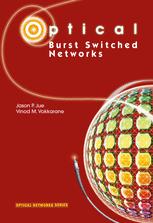

Most ebook files are in PDF format, so you can easily read them using various software such as Foxit Reader or directly on the Google Chrome browser.
Some ebook files are released by publishers in other formats such as .awz, .mobi, .epub, .fb2, etc. You may need to install specific software to read these formats on mobile/PC, such as Calibre.
Please read the tutorial at this link: https://ebookbell.com/faq
We offer FREE conversion to the popular formats you request; however, this may take some time. Therefore, right after payment, please email us, and we will try to provide the service as quickly as possible.
For some exceptional file formats or broken links (if any), please refrain from opening any disputes. Instead, email us first, and we will try to assist within a maximum of 6 hours.
EbookBell Team

4.0
96 reviewsNext-generation high-speed Internet backbone networks will be required to support a broad range of emerging applications which may not only require significant bandwidth, but may also have strict quality of service (QoS) requirements. Furthermore, the traffic from such applications are expected to be highly bursty in nature. For such traffic, the allocation of static fixed-bandwidth circuits may lead to the over-provisioning of bandwidth resources in order to meet QoS requirements.
Optical burst switching (OBS) is a promising new technique which attempts to address the problem of efficiently allocating resources for bursty traffic. In OBS, incoming data is assembled into bursts at the edges of the network, and when the burst is ready to be sent, resources in the network are reserved only for the duration of the burst. The reservation of resources is typically made by an out-of-band one-way control message which precedes the burst by some offset time. By reserving resources only for the duration of the burst, a greater degree of utilization may be achieved in the network.
This book provides an overview of optical burst switching. Design and research issues involved in the development of OBS networks are discussed, and approaches to providing QoS in OBS networks are presented. Topics include:
- Optical burst switching node and network architectures
- Burst assembly
- Signaling protocols
- Contention resolution
- Burst scheduling
- Quality of service in OBS networks